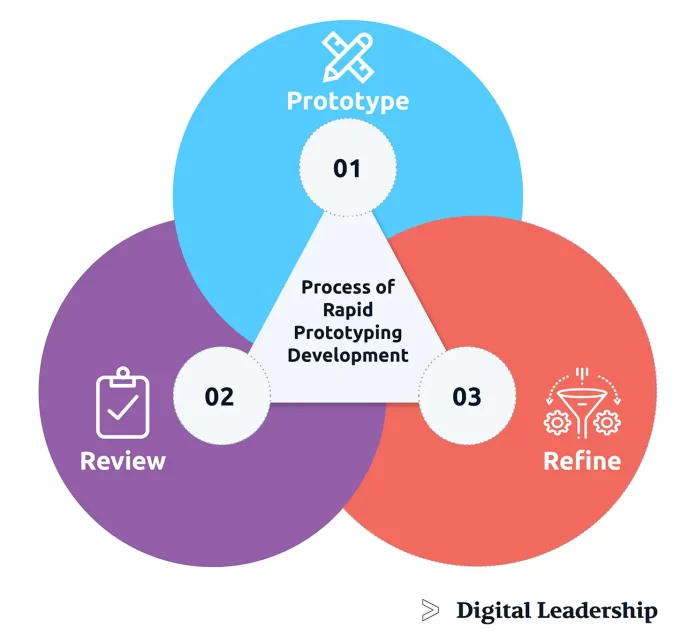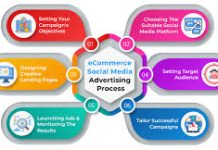Rapid prototyping/parts manufacturing technology is a general term for the technology to rapidly manufacture three-dimensional entities of arbitrary complex shapes directly driven by CAD models. Its characteristics are:
- 1) Any complex three-dimensional geometric entity can be manufactured.
- 2) CAD model is directly driven.
- 3) Forming equipment does not require special fixtures or tools.
- 4) No one or less intervention during the forming process.
Rapid prototyping company uses the principle of discrete/accumulation molding. The process is: first use 3D CAD software to design a computer 3D surface or solid model (also known as an electronic model) of the required parts, and then divide it into parts according to a certain thickness according to the process requirements. Layer, turn the original three-dimensional electronic model into two-dimensional plane information (section information), that is, a discrete process; then perform certain processing on the layered data, add processing parameters, and generate CNC codes. Under the control of a microcomputer, CNC The system processes each thin layer in an orderly and continuous manner in a plane processing manner and automatically bonds them into shape. This is the process of material accumulation.
With the development of RPM technology and people’s deepening understanding of this technology, its connotation is gradually expanding. At present, rapid prototyping technology includes all forming processes directly driven by CAD, and the main technical feature is the speed of forming. The transfer of materials can be in the form of free addition, removal, or a combination of addition and removal.
2. Main methods of RPM technology
There are no less than 30 specific processes of RPM technology, which can be summarized into 5 categories of methods based on the differences in materials used and material processing methods.
1. Selective liquid solidification
The principle of selective liquid curing is to focus the laser on the surface of the liquid light-curing material (such as light-curing resin), causing it to solidify regularly, from point to line to surface, to complete the construction of one level, and then lift and move one layer. Thickness, re-cover a layer of liquid material, and build another layer, so that the layers are superimposed to form a three-dimensional entity. Typical implementation processes of this method include stereolithography (SL, Stereolithography), solid ground curing (DGC, Solid Ground Curing), laser lithography (LS, Light Sculpting). In general, they all use selective curing of liquid resin. feature.
2. Selective layer bonding
Selective lamination bonding uses a laser or knife to cut the foil. First, cut out the process frame and the edge contours of the prototype, and then cut the materials that do not belong to the prototype into a grid shape. By moving the lifting platform and feeding the foil, new layers can be cut and glued together with the previous layers, so that the next block is obtained after layer by layer, and finally the piece that does not belong to the prototype is By peeling off small pieces of material, the desired three-dimensional solid body is obtained. A typical process for layer addition is Laminated Object Manufacturing (LOM). The foil mentioned here can be coated paper (paper coated with adhesive coating), coated ceramic foil, metal foil or other material-based foil.
3. Selective powder sintering/bonding
Selective powder sintering/bonding means: for a layer made of powder with good density and smoothness, the powder is selectively melted or bonded directly or indirectly to form a layer, the powder is spread and compacted, and then melted Knot or bond into another layer and fuse or bond with the original layer, so that the layers are superimposed into a three-dimensional entity. The so-called direct sintering means that the powders are directly melted and connected; indirect sintering means that only the adhesive coating on the surface of the powder is melted to achieve mutual bonding. Bonding refers to bonding powder with an adhesive. Its typical processes include selective laser sintering (SLS, Selective Laser Sintering), three-dimensional printing (3DP, 3D Printing), etc. The Patternless Casting Mold (PCM) process also belongs to this type of method. The powder materials here mainly include wax, polycarbonate, washed sand and other non-metallic powders, as well as metal powders such as iron, cobalt, chromium and their alloys.
4. Extrusion molding
Extrusion refers to melting hot-melt material (ABS, nylon or wax) through a heater, extruding and depositing one layer, and then building the second layer in the same way and melting it with the previous layer. Together, these layers are stacked to obtain a three-dimensional entity. A typical process using melt extrusion is fused deposition modeling (FDM, Fused Deposition Modeling).
5. Inkjet printing
Ink-Jet Printing refers to melting solid materials, using the principles of inkjet printing (bubble method and crystal oscillation method) to spray them out in an orderly manner, and build them up layer by layer to form a three-dimensional entity.
3. RPM technology process equipment, materials and software
The research and application of foreign RPM technology are mainly concentrated in the United States, Europe and Japan. From a comparison of technology, materials, applications and infrastructure, the overall situation is that the United States is ahead of Europe and Japan, and Europe and Japan are evenly divided.
At present, more than 200 institutions in the world have carried out RPM research. The main ones that can commercialize RPM equipment include American 3D systems, Helisys, DTM Corp, Japanese C-MET, D-MEC, German EOS, and Israeli Cubital. According to statistics By 1988, there were more than 4,300 RPM forming equipment in the world.
1. RPM process equipment
At present, RPM process equipment is developing rapidly, and many companies have developed their own equipment for the aforementioned five RPM technologies.
There are six major RPM manufacturers in the United States, namely 3D systemes, Helisys, DTM, Stratasys, Sanders Prototype and Soligen. There are 6 companies in Japan, namely CMET, D-MEC, Teijin Seiki, Kira Corp, Mitsui Zosen and Denken Enginering. There are three companies in Europe, namely EOS, Cubital and F&S.
2. RPM molding materials
Forming materials are a key link in the development of RPM technology. It affects the forming speed, accuracy and physical and chemical properties of the prototype, and directly affects the secondary application of the prototype and the user’s choice of forming process equipment. The emergence of new foreign technologies is often related to the application of new materials. The forming materials currently used by RPM are relatively abundant.
3. Development of software for RPM
Software is the soul of the RPM system. Among them, data conversion and processing software as a CAD to RP interface is one of the keys.
Major RPM system manufacturers generally develop their own data conversion interface software, such as 3D SYSTEM’s ACES, QuickCast, Helisys, Cubital’s SoliderDFE, Sanders Prototype’s ProtBuild and ProtoSupport, etc.
Due to the difficulty and relative independence of data conversion interface software development between CAD and RPM, many third-party software has emerged abroad as a bridge between CAD and RP systems. These software generally use commonly used data file formats as input and output interfaces. The input data file formats include STL, IGES, DXF, HPGL, CT slice files, etc., while the output data files are generally CLI. Some of the more famous foreign third-party interface software include: Bridge Works and Solid View of the American Solid Concept Company, Magics of the Belgian Materialize Company, STLManager of the American POGO Company, Still View of the American Igore Tebelev, Surface-RPM of the American Imageware Company, etc. .
4. Application of RPM technology
The application of RPM technology is developing rapidly. One notable indicator is the number and revenue of RPM service agencies. The number of foreign RPM service agencies increased at an annual rate of 59%, from 42 in 1992 to 284 in 1996 and 331 in 1997. Equipment purchased by service organizations accounted for 29% of equipment ownership. In 1995, the total revenue of service organizations reached US$192 million, while the sales revenue of molding machines in the same year was US$78.6 million. It can be said that the stage of familiarity, wait-and-see, and tentative application of RPM technology has entered the stage of truly using RPM as an important link in product development, improving product development quality, and accelerating product development speed.
5. Development Trend of RPM Technology
The main development trends of RPM technology are:
1. Different manufacturing goals develop relatively independently
In terms of manufacturing goals, RPM is mainly used for
- ① rapid concept design prototyping,
- ② rapid mold prototyping,
- ③ rapid functional test prototyping
- ④ rapid functional parts manufacturing.
Due to the huge market and technical feasibility of rapid concept manufacturing and rapid prototype manufacturing, these two aspects will be the focus of research and commercialization in the future. Due to the large gap between each other’s characteristics, the two will develop relatively independently. Due to the limitations of the scope of use and the lack of distinctive features, rapid test manufacturing will not form an independent genre in itself and will be affiliated with rapid concept manufacturing. Rapid manufacturing of functional parts will be an important direction of development, but the technology is very difficult and will remain limited to the research field for a long time to come.
2. March towards large-scale manufacturing and micro-manufacturing
Analyzing the product series of major companies, it can be found that the manufacturing size of prototypes is increasing. Due to the difficulty of manufacturing large molds and the advantages of RPM in mold manufacturing, it can be predicted that a certain proportion of the future RPM market will be occupied by large prototype manufacturing. In sharp contrast, RPM will march into the ground field. An important development direction of SL is microlithography to manufacture microscale parts. Japan’s Nagoya University leads the way in this regard. The laser spot can reach 5μm, and the prototype does not move during forming. The laser beam is precisely focused on the formed prototype through the transparent plate. The X-Y scanning full stop accuracy is 0.00025mm, and the Z-direction stop accuracy is 0.001mm. It can manufacture 5μm×5μm×3μm parts such as venous valves, integrated circuit parts, etc.
3. Pursue RPM’s faster manufacturing speed, higher manufacturing accuracy, and higher reliability.
4. The use of RPM equipment is peripheral and the operation is intelligent. It makes the installation and use of RPM equipment very simple and does not require specialized operators.
5. RPM industry standardization and integration with the entire product manufacturing system.
China Top Rapid Prototyping Company – Be-Cu.com
Founded in 1995 by entrepreneur Famer Li, our company radically reduced the time needed to produce injection-molded plastic prototypes. Famer Li developed complex software that automated the manufacturing process by connecting mills and presses in a network. As a result, plastic and metal parts could be made much faster than ever before.
Over the next decade, we expanded our capabilities in injection molding, introduced quick-turn CNC machining, and opened facilities globally.
In 2014, we launched 3D printing services to simplify the transition from early prototyping to low-volume production.Our 25 years of growth and expanding capabilities provide customers with the best digital manufacturing experience in the industry. This continued evolution shapes our vision and mission as a company.Be-Cu provides the highest standard of laser cutting and rapid prototyping service for all your needs. Contact us today to know more about what we offer!
- Sales: Bella
- Web:be-cu.com
- Phone: +86 151 1280 7161
- Email: info@be-cu.com
- Affiliated: Be-cu Prototype
- Address: Dongguan,China



